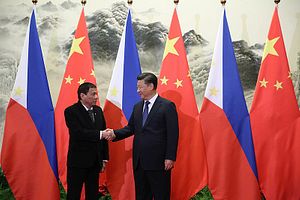On March 4, a Philippine senator expressed concern that a few thousand Chinese military personnel were currently operating in the Philippines. Though the concern has yet to be verified, it is just one manifestation of the growing fears of Chinese influence in the Philippines and alleged government complicity in it.
One of the consequences of Duterte’s engagement of China over the past few years as part of his so-called “independent foreign policy” has been growing concerns about illicit, covert, and malign Chinese activity in the Philippines and aspects of potential government complicity, some of which are also shared in other Southeast Asian countries as well. This covers a range of areas, including espionage, surveillance, money laundering, prostitution, and gambling tied to what are referred to as Philippine Offshore Gaming Operations (POGOs).
That has continued on into 2020 as well. Indeed, Senator Richard Gordon has been leading a hearing on these illicit activities, and he claimed last week that these POGOs were being infiltrated by People’s Liberation Army (PLA) for intelligence gathering in the country after identification cards of alleged PLA members were discovered on two arrested Chinese suspects in a shooting incident in Makati City last week.
This week, we saw another round of headlines spotlighting an aspect of this with comments by a Philippine senator. Senator Panfilo Lacson expressed concern that a good number of Chinese military personnel, numbering a few thousand by estimates that he had and had shared with Gordon as well, were currently in the Philippines for unknown purposes.
Per local media reports, Lacson said there may be an estimated “2000 to 3000” PLA members in the Philippines, with the possibility that they may have been in the country for some sort of “immersion mission” that could raise concerns. This came in the face of other concerns he had raised on illicit Chinese activities in the Philippines, including that around $446 million had been smuggled by 47 individuals into the Philippines in the span of five months, with Chinese money launderers establishing connections with government officials.
Lacson’s comments were not accompanied by more specifics, and he himself said that this would need additional validation by the by the intelligence community. Nonetheless, irrespective of the veracity of this single allegation, it is important to note that it is just one manifestation of the broader reality of growing fears of Chinese influence in the Philippines and alleged government complicity in it and the increasing scrutiny that has resulted. Given the potentially serious implications for Philippine domestic and foreign policy, it will be important for these occasional efforts to shine light on aspects of this to be followed through on so that we can get more verification of these rising fears.

































